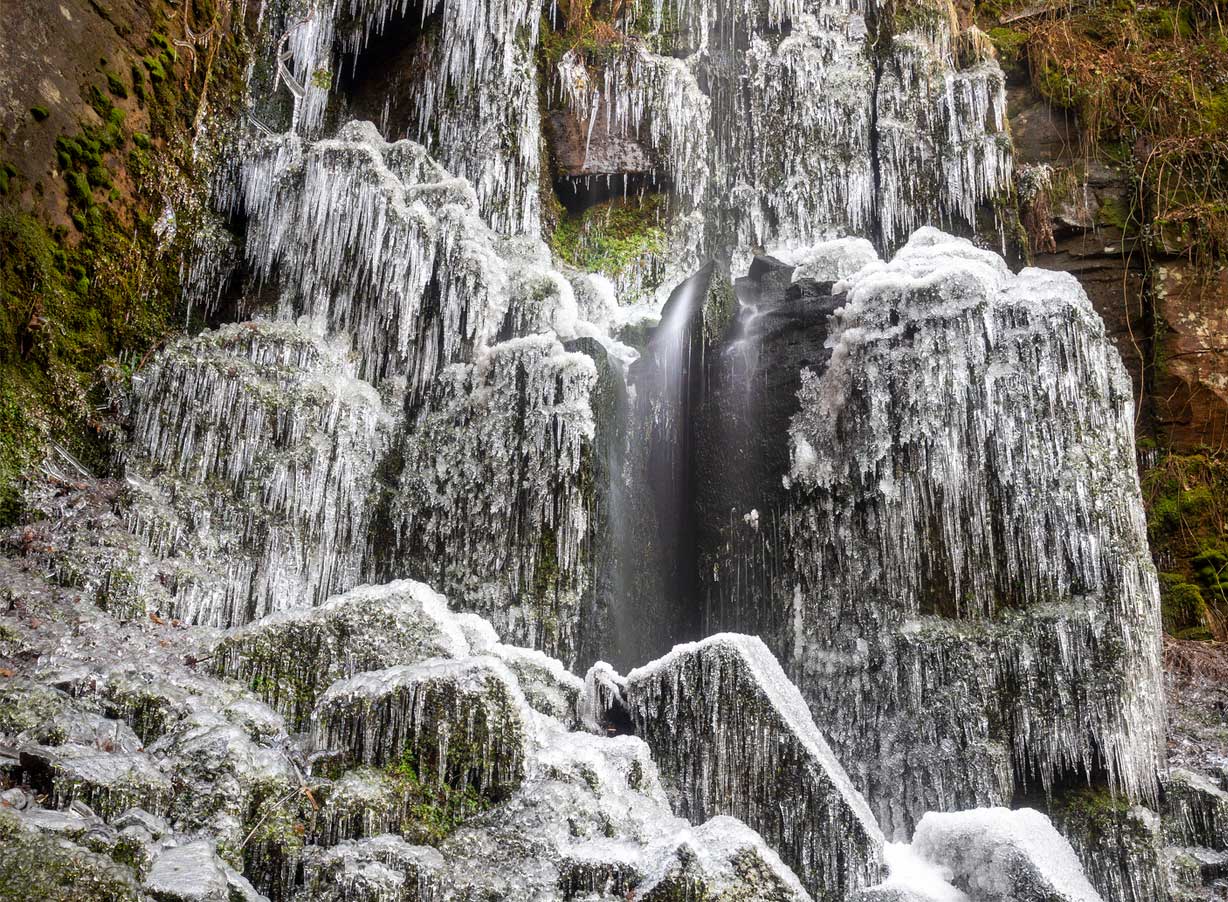From the outside, ice climbing in the UK looks like a bit of a dark art. It’s like rock climbing but with an air of mystery – because while rocks are always there, ice often isn’t. Luckily, with the right kit, some good skills and the weather conditions aligning, it’s possible to climb the UK’s ice.
Now, your first question is probably, “Wait – can we even go ice climbing in the UK?” You’ve seen full on frozen waterfalls in Norway, but surely the UK doesn’t have that kind of weather? Well, good news is that we definitely do. Yes, it’s not as consistently cold as Norway (or a great many other places) but ice climbing is possible year on year. It’s just about finding the right routes at the right moment.
To convince you, I spoke to Lina Arthur, author of Snow and Ice – a guide to the winter mountaineering routes of Great Britain. “It is definitely possible to ice climb most years in the UK,” says Lina, “though your chances are highest in Scotland. In Scotland, the ice gully season on Ben Nevis usually runs from January until April, with February and March the most reliable. Pure water icefall climbing conditions in the Lake District and Snowdonia (and elsewhere in the UK) tend to come round only once every five to ten years – as in 2021, when there was an exceptional week of brilliant roadside ice climbing in the Lake District.”

When are the conditions right for UK ice climbing?
The UK’s weather is pretty temperamental at the best of times. “Winter climbing conditions in the UK are notoriously hard to predict,” says Lina, “it takes practice and experience to interpret the weather forecast and apply it to a particular climb. Keep an eye on the Met Office and MWIS forecasts prior to your climb to understand the weather patterns. High pressure systems bringing cold air from Scandinavia can give brilliant conditions. A number of good snowfalls and periods of freeze-thaw are required to create reliable conditions and fill the gullies with plastic ice.
“Once the major ice lines on Ben Nevis have formed they are quite thaw-resistant and some may remain in good condition until late April. By contrast, ice routes further south may be in condition for only a few days before melting. Check the freezing level and the wind speed/direction and match these to the aspect and height of a route. It is best to be as flexible as possible – routes may be in condition on one crag and not on another.
“A final check of the Met Office update in the early morning can alert you to changes that have occurred overnight. You can also check conditions reports on UKClimbing and winterclimbingforecasts, but bear in mind that just because someone has logged a route, doesn’t mean that it was or still will be in condition!”





